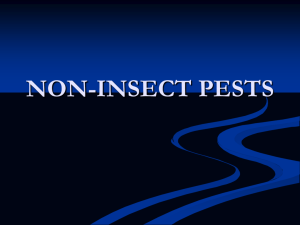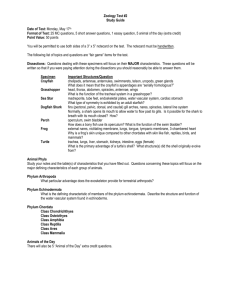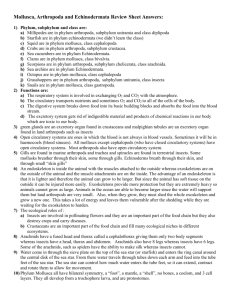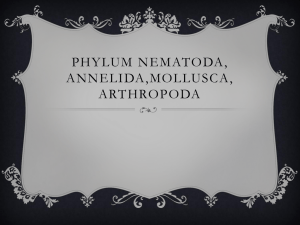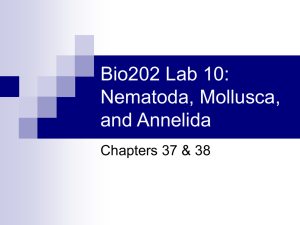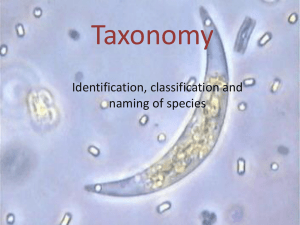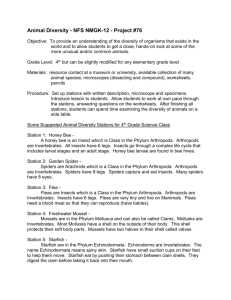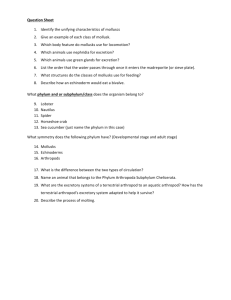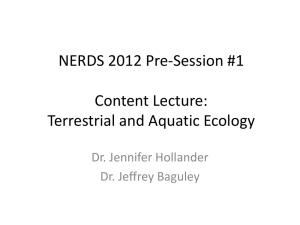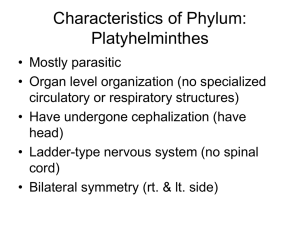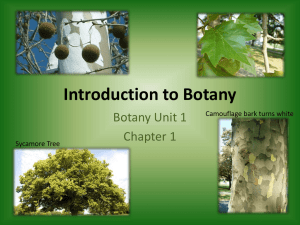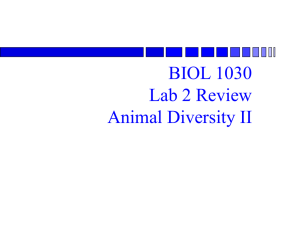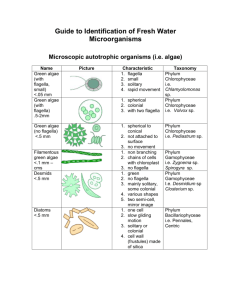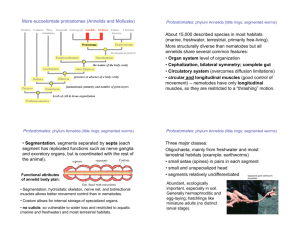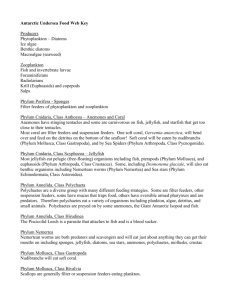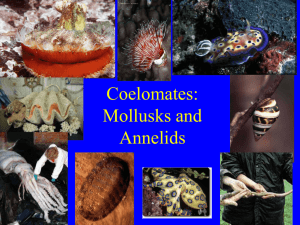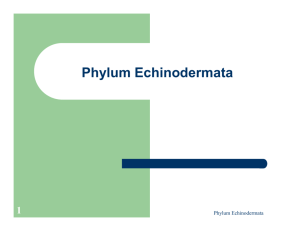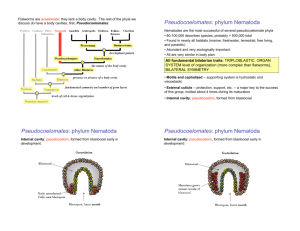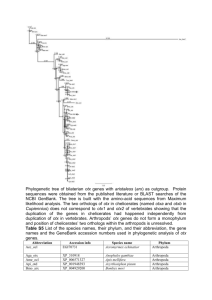SWYK- animal answer key
advertisement
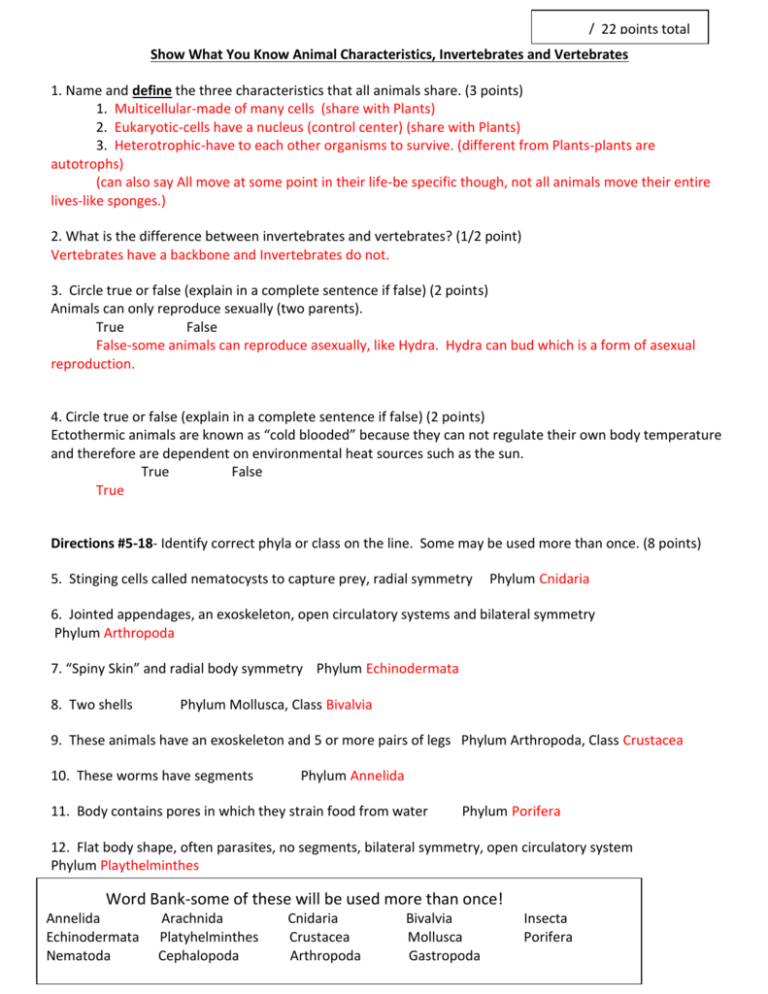
/ 22 points total Show What You Know Animal Characteristics, Invertebrates and Vertebrates 1. Name and define the three characteristics that all animals share. (3 points) 1. Multicellular-made of many cells (share with Plants) 2. Eukaryotic-cells have a nucleus (control center) (share with Plants) 3. Heterotrophic-have to each other organisms to survive. (different from Plants-plants are autotrophs) (can also say All move at some point in their life-be specific though, not all animals move their entire lives-like sponges.) 2. What is the difference between invertebrates and vertebrates? (1/2 point) Vertebrates have a backbone and Invertebrates do not. 3. Circle true or false (explain in a complete sentence if false) (2 points) Animals can only reproduce sexually (two parents). True False False-some animals can reproduce asexually, like Hydra. Hydra can bud which is a form of asexual reproduction. 4. Circle true or false (explain in a complete sentence if false) (2 points) Ectothermic animals are known as “cold blooded” because they can not regulate their own body temperature and therefore are dependent on environmental heat sources such as the sun. True False True Directions #5-18- Identify correct phyla or class on the line. Some may be used more than once. (8 points) 5. Stinging cells called nematocysts to capture prey, radial symmetry Phylum Cnidaria 6. Jointed appendages, an exoskeleton, open circulatory systems and bilateral symmetry Phylum Arthropoda 7. “Spiny Skin” and radial body symmetry Phylum Echinodermata 8. Two shells Phylum Mollusca, Class Bivalvia 9. These animals have an exoskeleton and 5 or more pairs of legs Phylum Arthropoda, Class Crustacea 10. These worms have segments Phylum Annelida 11. Body contains pores in which they strain food from water Phylum Porifera 12. Flat body shape, often parasites, no segments, bilateral symmetry, open circulatory system Phylum Playthelminthes Word Bank-some of these will be used more than once! Annelida Echinodermata Nematoda Arachnida Platyhelminthes Cephalopoda Cnidaria Crustacea Arthropoda Bivalvia Mollusca Gastropoda Insecta Porifera 13. 8 legs, no antennae, two body segments, no wings Phylum Arthropoda, Class Arachnida 14. 6 legs, 3 body parts, 1 pair of antenna, 1 or 2 pairs of wings Phylum Arthropoda, Class Insecta 15. If these live in water most have gills to get oxygen from water Phylum Mollusca 16. Many of these animals have advanced nervous systems, gills for breathing in water, a closed circulatory system and use jet propulsion to move Phylum Mollusca, Class Cephalopoda 17. This phylum of worms has rounded cylindrical bodies. They have an open circulatory system and bilateral symmetry Phylum Nematoda 18. This class of mollusks have a radula used for feeding Class Gastropoda Word Bank-some of these will be used more than once! Annelida Echinodermata Nematoda Arachnida Platyhelminthes Cephalopoda Cnidaria Crustacea Arthropoda Bivalvia Mollusca Gastropoda Insecta Porifera 19. These animals have a four chambered heart and hollow bones. (1 point) a. Fish b. Birds c. Mammals d. Reptiles 20. These animals have mammary glands that produce milk for their young. (1 point) a. Birds b. Amphibians c. Reptiles d. Mammals 21. Members of this group have gills for breathing. (1 point) a. Fish b. Amphibians c. Reptiles d. Birds 22. What class of vertebrates does a desert tortoise (turtle) belong to? (1 point) a. Fish b. Amphibian c. Reptile d. Mammal 23. Endo or Ecto? On the line next to animal write “endo” if the are endothermic and “ecto” if they are ectothermic. (2.5 points) Reptiles-Ecto Birds-Endo Mammals -Endo Amphibians -Ecto Fish-Ecto

